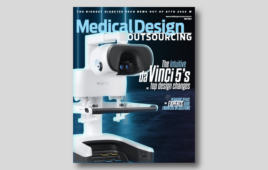
“Focus on UI/UX (user interface and user experience) is paramount,” said Siddarth Satish, VP of Digital Innovation for the Surgical Technologies business at Stryker. [Photo courtesy of Stryker]
Four Stryker executives shared how the Kalamazoo, Michigan–based orthopedic device giant is thinking differently about medical product development and how health care providers and patients will ultimately use them.
The DeviceTalks Boston panel of Stryker executives was moderated by Stryker Orthopaedics and Spine Group President Spencer Stiles this week. Read our earlier coverage on their discussion of medtech trends and more from leaders at Medtronic and Harvard University.
The following has been lightly edited for space and clarity.

Tracy Robertson [Photo courtesy of Stryker]

Dave Lively is SVP of product management at Vocera (now part of Stryker). [Photo courtesy of Stryker]
Surgical Technologies VP of Digital Innovation Siddarth Satish: Focus on UI/UX (user interface and user experience) is paramount. With our product, we’re literally asking nurses in the middle of an OR to hold a bloody sponge up to an iPad and open it up. Think about that for a second. There’s a million things going on, it’s tough to do. We not only worked through that iterative cycle, we had to build and formalize human factors testing as part of our pathway through FDA. The agency has started to focus more and more and more on human factors. We’re seeing that a lot in these newer digital health technologies and during the pandemic through the EUA process with those at-home COVID test kits. It’s a really big deal. So we standardize and protocolize a lot of that. It’s built into every release cycle, even if we’re pushing a few lines of code, a small fix, there’s the question, “Does this qualify for a concerted test with, let’s say, 20 nurses to validate what we’ve done?”

Robert Cohen [Photo courtesy of Stryker]








![A photo of the Medtronic GI Genius ColonPro polyp detection system flagging a potential sign of colon cancer during a colonoscopy. [Photo courtesy of Medtronic]](https://www.medicaldesignandoutsourcing.com/wp-content/uploads/2024/04/Medtronic-GI-Genius-doctors-268x170.jpg)